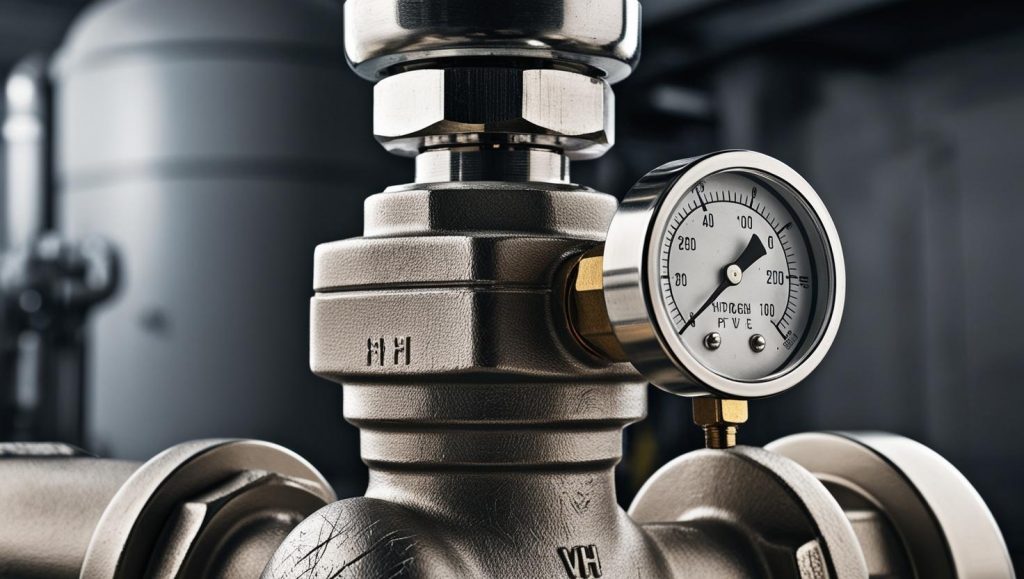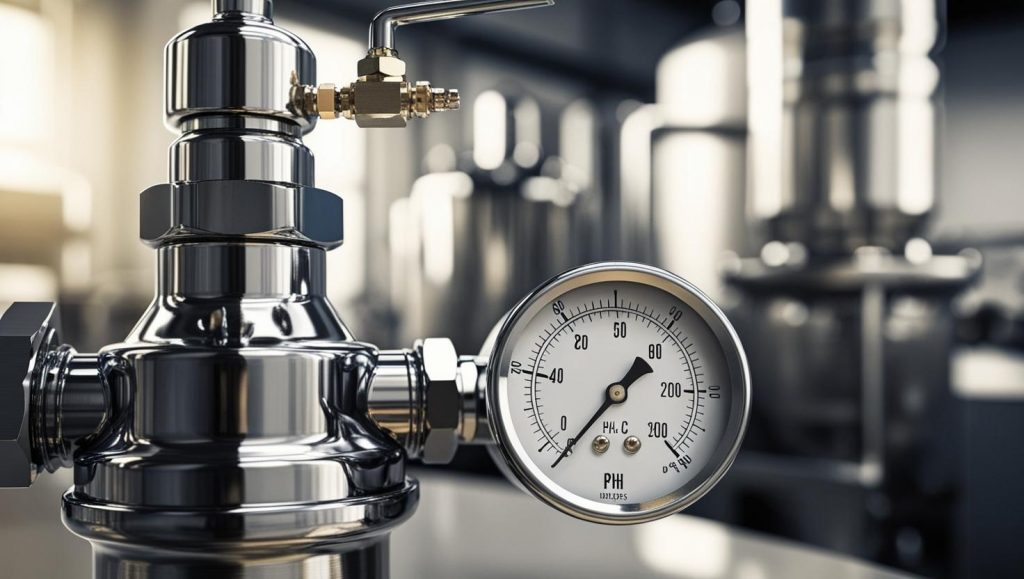The US Hydrogen Valve Market is experiencing a transformative phase, driven by the global push toward clean energy and the increasing adoption of hydrogen as a sustainable fuel source. As the United States accelerates its efforts to achieve net-zero emissions by 2050, hydrogen has emerged as a cornerstone of the energy transition, with valves playing a critical role in ensuring the safe and efficient handling of this highly reactive gas.

Understanding the Importance of the US Hydrogen Valve Market in the Hydrogen Economy
The US Hydrogen Valve Market is integral to the development of the hydrogen economy, which envisions hydrogen as a key energy carrier to decarbonize sectors such as transportation, heavy industry, and power generation. Hydrogen valves are specialized components designed to manage the unique properties of hydrogen, including its low density, high diffusivity, and potential to cause embrittlement in certain materials. These valves ensure the safe and efficient flow of hydrogen across various stages of the value chain, from production and storage to transportation and end-use applications.
The significance of the US Hydrogen Valve Market lies in its ability to support the infrastructure required for hydrogen’s widespread adoption. As the United States invests heavily in hydrogen production facilities, refueling stations, and fuel cell technologies, the demand for high-performance valves capable of operating under extreme conditions—such as high pressures of 350 to 700 bar and cryogenic temperatures—has surged.
The US Hydrogen Valve Market’s growth is underpinned by the rising adoption of hydrogen in applications such as fuel cell vehicles, industrial processes, and energy storage. For instance, the transportation sector, particularly heavy-duty trucks and buses, is increasingly turning to hydrogen fuel cells, necessitating reliable valves for refueling stations and onboard storage systems. Similarly, industrial sectors like steelmaking and ammonia production are exploring hydrogen as a low-carbon alternative, further driving demand for specialized valves. By 2030, the US Hydrogen Valve Market is expected to play a pivotal role in supporting the nation’s ambition to produce 10 million metric tons of clean hydrogen annually.
Key Drivers Fueling Growth in the US Hydrogen Valve Market
Several factors are propelling the growth of the US Hydrogen Valve Market, with sustainability goals and technological advancements at the forefront. The global commitment to reducing greenhouse gas emissions has positioned hydrogen as a critical tool for decarbonization, particularly in hard-to-electrify sectors. In the United States, federal and state-level policies are fostering a conducive environment for hydrogen development. For example, the Bipartisan Infrastructure Law allocates billions of dollars to hydrogen research, development, and demonstration projects, directly impacting the demand for hydrogen valves.
Technological innovation is another key driver of the US Hydrogen Valve Market. Manufacturers are developing advanced valves capable of withstanding hydrogen’s challenging properties, such as its tendency to permeate through materials and cause embrittlement. Innovations in materials science, including the use of high-quality stainless steel and advanced coatings, are enhancing valve durability and performance. Additionally, the integration of smart technologies, such as sensors and IoT-enabled monitoring systems, is improving the efficiency and safety of hydrogen valves, making them indispensable in modern hydrogen infrastructure.
The expansion of hydrogen infrastructure, including production plants, pipelines, and refueling stations, is also a significant growth driver. As the United States aims to establish regional hydrogen hubs, the need for reliable valves to manage hydrogen flow and ensure safety is becoming increasingly critical. These hubs, supported by federal funding, are expected to create a robust ecosystem for hydrogen production and distribution, further boosting the US Hydrogen Valve Market.
Challenges Facing the US Hydrogen Valve Market
Despite its promising outlook, the US Hydrogen Valve Market faces several challenges that must be addressed to sustain its growth. One of the primary hurdles is the high cost of hydrogen production, particularly green hydrogen produced via electrolysis using renewable energy. While costs are projected to decline with technological advancements and economies of scale, current production expenses—ranging from $5 to $6 per kilogram—pose a barrier to widespread adoption, indirectly affecting the demand for hydrogen valves.
Another challenge is the issue of hydrogen embrittlement, which can compromise the integrity of valves and other infrastructure components. Hydrogen molecules can diffuse into metal lattices, reducing tensile strength and causing cracking under low stress levels. To mitigate this, manufacturers in the US Hydrogen Valve Market are investing in research to develop materials and designs that resist embrittlement, but these solutions often come at a higher cost, impacting market scalability.
Safety concerns also present a challenge for the US Hydrogen Valve Market. Hydrogen’s flammable nature and low ignition energy require valves to meet stringent safety standards, such as those set by the American Society of Mechanical Engineers (ASME) and the International Organization for Standardization (ISO). Ensuring compliance with these standards while maintaining cost-effectiveness is a delicate balance that manufacturers must navigate.

Technological Innovations Shaping the US Hydrogen Valve Market
Technological advancements are at the heart of the US Hydrogen Valve Market’s evolution, enabling the industry to overcome challenges and meet the demands of a growing hydrogen economy. One of the most significant innovations is the development of high-pressure ball valves, which offer quick on/off control and leak-tight performance under pressures ranging from 350 to 700 bar. These valves are particularly critical for hydrogen refueling stations and fuel cell vehicles, where precise flow control is essential.
Needle valves, designed for precise flow adjustment, are also gaining traction in the US Hydrogen Valve Market. These all-metal valves, typically constructed from high-quality stainless steel, are engineered to resist hydrogen embrittlement and ensure long-term reliability. Additionally, manufacturers are exploring cryogenic valve designs for liquid hydrogen applications, which require operation at temperatures below -253°C.
The integration of smart technologies is transforming the US Hydrogen Valve Market by enhancing valve functionality and performance. IoT-enabled valves equipped with sensors can monitor pressure, temperature, and flow rates in real time, enabling predictive maintenance and reducing the risk of leaks or failures. These advancements are particularly valuable in large-scale hydrogen infrastructure projects, where safety and efficiency are paramount.
Applications of Hydrogen Valves in the US Hydrogen Valve Market
The US Hydrogen Valve Market serves a wide range of applications, reflecting the versatility of hydrogen as an energy carrier. In the transportation sector, hydrogen valves are critical components of fuel cell vehicles, refueling stations, and onboard storage systems. The growing adoption of hydrogen-powered buses, trucks, and trains is driving demand for high-pressure valves capable of handling the rigorous conditions of vehicle operation.
In the industrial sector, the US Hydrogen Valve Market supports applications such as green ammonia production, steelmaking, and chemical manufacturing. Hydrogen is increasingly used as a feedstock or reducing agent in these processes, requiring specialized valves to manage high-pressure and corrosive environments. For example, in steelmaking, hydrogen can replace coal in the reduction of iron ore, significantly reducing carbon emissions.
Energy storage is another key application area for the US Hydrogen Valve Market. Hydrogen can be stored and converted back into electricity using fuel cells, providing a solution for long-term energy storage and grid balancing. Valves play a crucial role in managing the flow of hydrogen in storage systems, ensuring safety and efficiency.
Regional Insights: The Role of the US in the Global Hydrogen Valve Market
The United States is a leading player in the global hydrogen valve market, driven by its advanced industrial base, robust research ecosystem, and supportive policy environment. The US Hydrogen Valve Market benefits from the country’s significant investments in hydrogen infrastructure, particularly in states like California, Texas, and New York, which are emerging as hydrogen hubs. California, for instance, has ambitious plans to expand its network of hydrogen refueling stations, creating substantial demand for hydrogen valves.
The US Hydrogen Valve Market also benefits from the presence of major manufacturers, such as Emerson Electric Co., which offers a range of Fisher control valves designed for hydrogen applications. These companies are leveraging their expertise in valve technology to develop innovative solutions tailored to the needs of the hydrogen economy. Additionally, collaborations between industry, academia, and government are fostering advancements in valve design and materials, further strengthening the US market’s position.
Download PDF Brochure for more Info @ https://www.marketsandmarkets.com/pdfdownloadNew.asp?id=27538308
Competitive Landscape of the US Hydrogen Valve Market
The US Hydrogen Valve Market is characterized by a competitive landscape, with several key players driving innovation and market growth. Companies like Emerson Electric Co., Swagelok, and Parker Hannifin are at the forefront, offering a diverse portfolio of hydrogen valves for various applications. These manufacturers are investing in research and development to enhance valve performance, reduce costs, and meet evolving safety standards.
Strategic partnerships and collaborations are also shaping the competitive dynamics of the US Hydrogen Valve Market. For example, valve manufacturers are working with hydrogen producers, infrastructure developers, and automotive companies to develop integrated solutions for hydrogen systems. These partnerships enable companies to address complex challenges, such as ensuring compatibility between valves and other infrastructure components.
Sustainability and the US Hydrogen Valve Market
Sustainability is a core driver of the US Hydrogen Valve Market, as hydrogen is positioned as a key solution for achieving net-zero emissions. By enabling the safe and efficient handling of hydrogen, valves contribute to the broader adoption of clean energy technologies. The US Hydrogen Valve Market is also benefiting from the growing emphasis on green hydrogen, which is produced using renewable energy sources and has a minimal carbon footprint.
Manufacturers in the US Hydrogen Valve Market are adopting sustainable practices, such as using eco-friendly materials and optimizing production processes to reduce waste. These efforts align with the broader goals of the hydrogen economy, which seeks to create a low-carbon energy system that supports environmental and economic objectives.
Future Outlook for the US Hydrogen Valve Market
The future of the US Hydrogen Valve Market is bright, with significant growth opportunities on the horizon. As the United States continues to invest in hydrogen infrastructure and technology, the demand for specialized valves is expected to rise. The market is likely to benefit from advancements in valve design, such as the development of compact valves for automotive applications and high-performance valves for industrial processes.
The US Hydrogen Valve Market is also expected to see increased adoption of digital technologies, such as artificial intelligence and machine learning, to enhance valve performance and predictive maintenance. These innovations will enable the market to meet the evolving needs of the hydrogen economy while maintaining a focus on safety and reliability.
Government support will remain a critical factor in the growth of the US Hydrogen Valve Market. Continued funding for hydrogen research, development, and deployment, coupled with favorable policies, will create a conducive environment for market expansion. By 2030, the US Hydrogen Valve Market is poised to play a central role in supporting the nation’s transition to a sustainable energy future.
FAQs About the US Hydrogen Valve Market
What is the US Hydrogen Valve Market?
The US Hydrogen Valve Market refers to the industry segment focused on the production, distribution, and application of specialized valves designed for handling hydrogen gas in various sectors, including transportation, industry, and energy storage.
What drives the growth of the US Hydrogen Valve Market?
The market is driven by the increasing demand for hydrogen as a clean energy source, supportive government policies, technological advancements in valve design, and the expansion of hydrogen infrastructure.
What are the key applications of hydrogen valves in the US?
Hydrogen valves are used in fuel cell vehicles, refueling stations, industrial processes like ammonia production and steelmaking, and energy storage systems.
What challenges does the US Hydrogen Valve Market face?
Challenges include high hydrogen production costs, hydrogen embrittlement, safety concerns, and the need for cost-effective compliance with stringent safety standards.
How is the US Hydrogen Valve Market expected to grow by 2030?
The market is projected to grow significantly, driven by investments in hydrogen infrastructure, technological innovations, and the increasing adoption of hydrogen in various applications.
